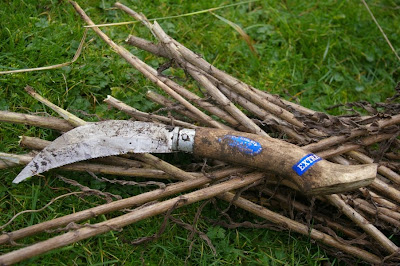
While we were in Kenya we had the great pleasure of staying with my friend Peter Paterson at his home in Karen, on the outskirts of Nairobi. Originally built by his father in the 1920s, the house is a classic rambling settler home, with rooms added as required to the original core. Its heart is a deep, shady veranda, from which one looks out over the garden and forest to one of the finest views of the Ngong Hills, framed by tall
Croton trees.
The house and garden effectively occupy a clearing in the native forest - a valuable relict fragment of dry upland forest preserving habitat for wild plants (including
Gloriosa superba), a rich diversity of birds and a few monkeys(though not the warthogs that pester other properties and ruin their lawns. In the past the garden was more formal, with English-style herbaceous borders, but Peter now prefers a less formal approach. The result is a charming mixture of planting, mostly of shrubs and trees, but with succulents, herbaceous plants and epiphytes throughout. In that climate, a huge range of temperate and subtropical plants will grow, but water is becoming scarcer and so things requiring irrigation are now avoided.
Among the shrubs flowering while we were there was a
Calliandra, covered in pretty, powder-puff like clusters of pink flowers, and another legume,
Cadia purpurea, whose most un-legume-like flowers open creamy-white and turn pink. In the ponds blue waterlilies (
Nymphaea caerulea) were surrounded by Water Hyacinth (
Eichhornia crassipes) and the floating fern
Salvinia. This looks lovely with raindrops held on its water-repelling hairs, but both of these plants can be serious pests of waterways.In ecological contrast was a hedge of a native
Aloe, flowering magnificently and being visited by dozens of sunbirds.








